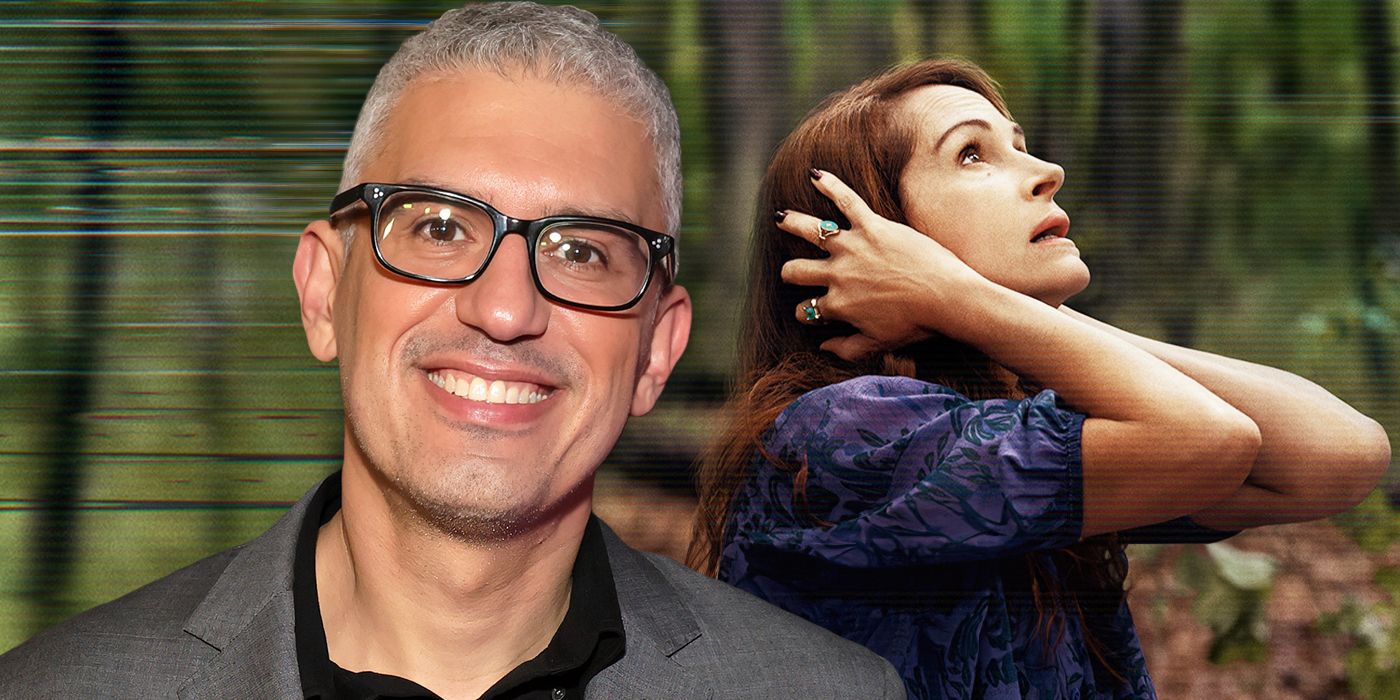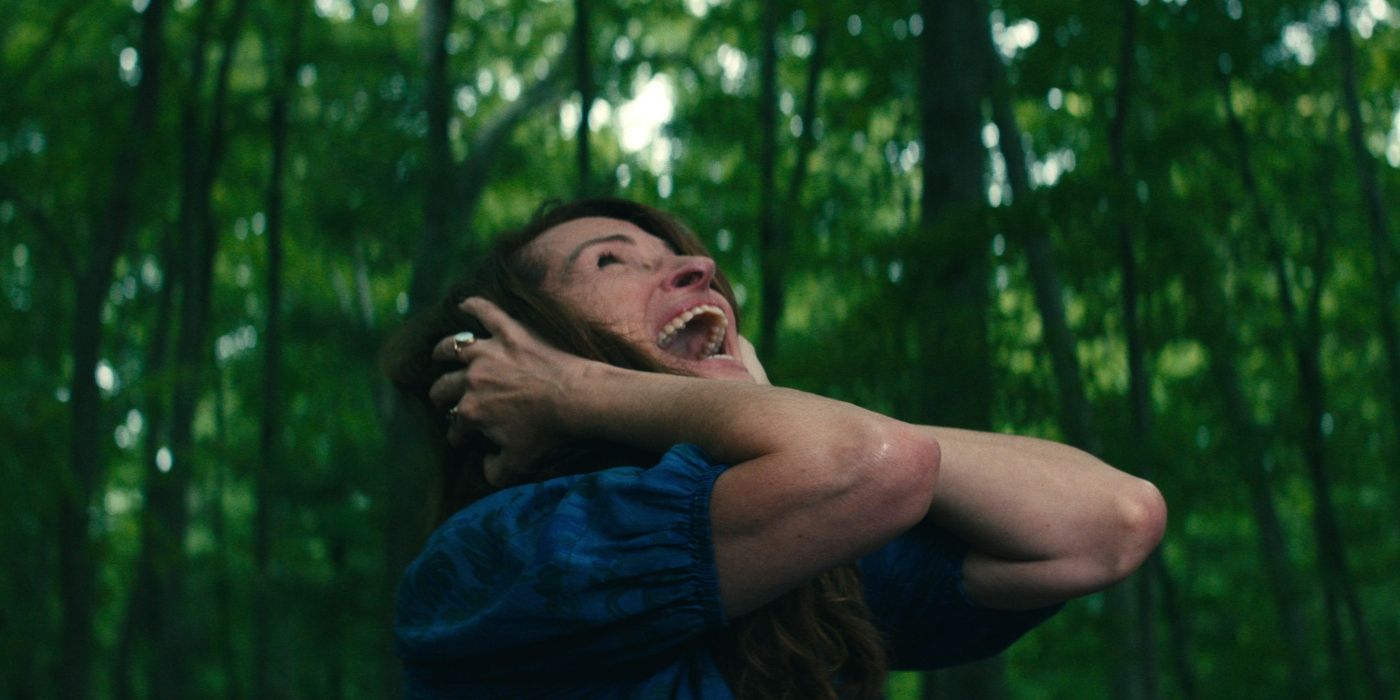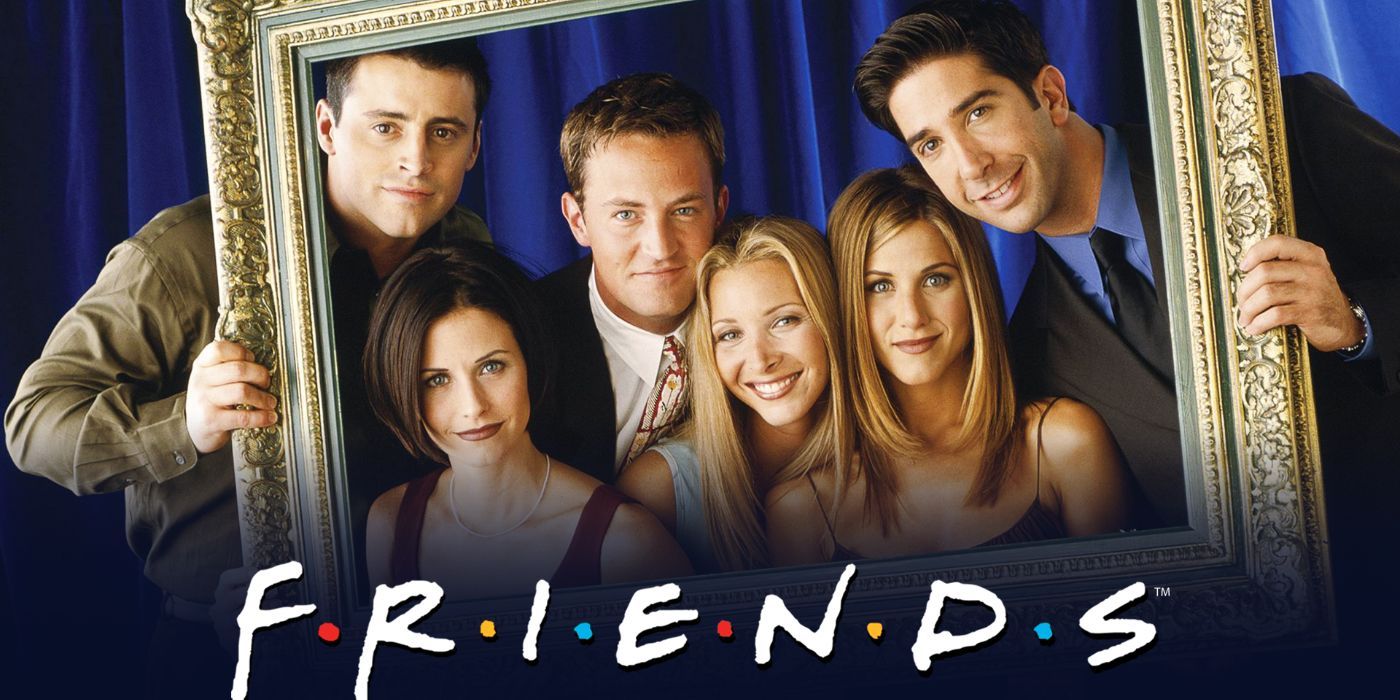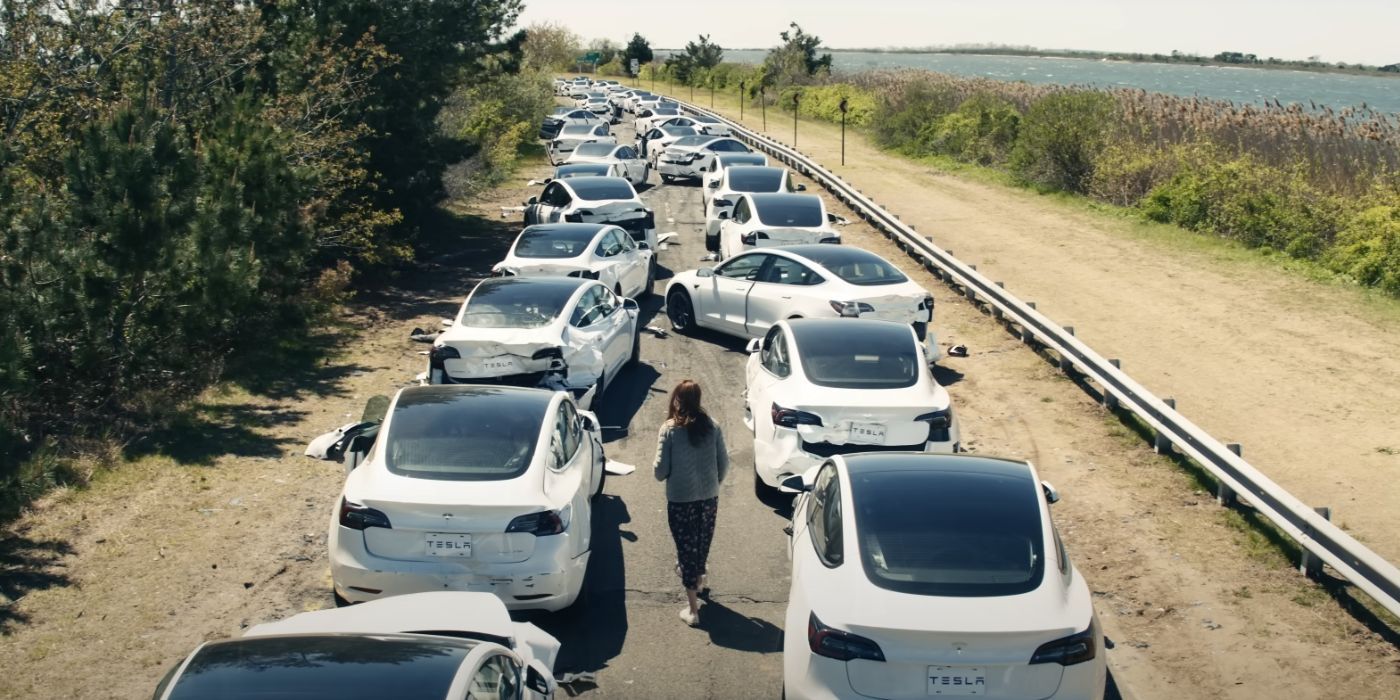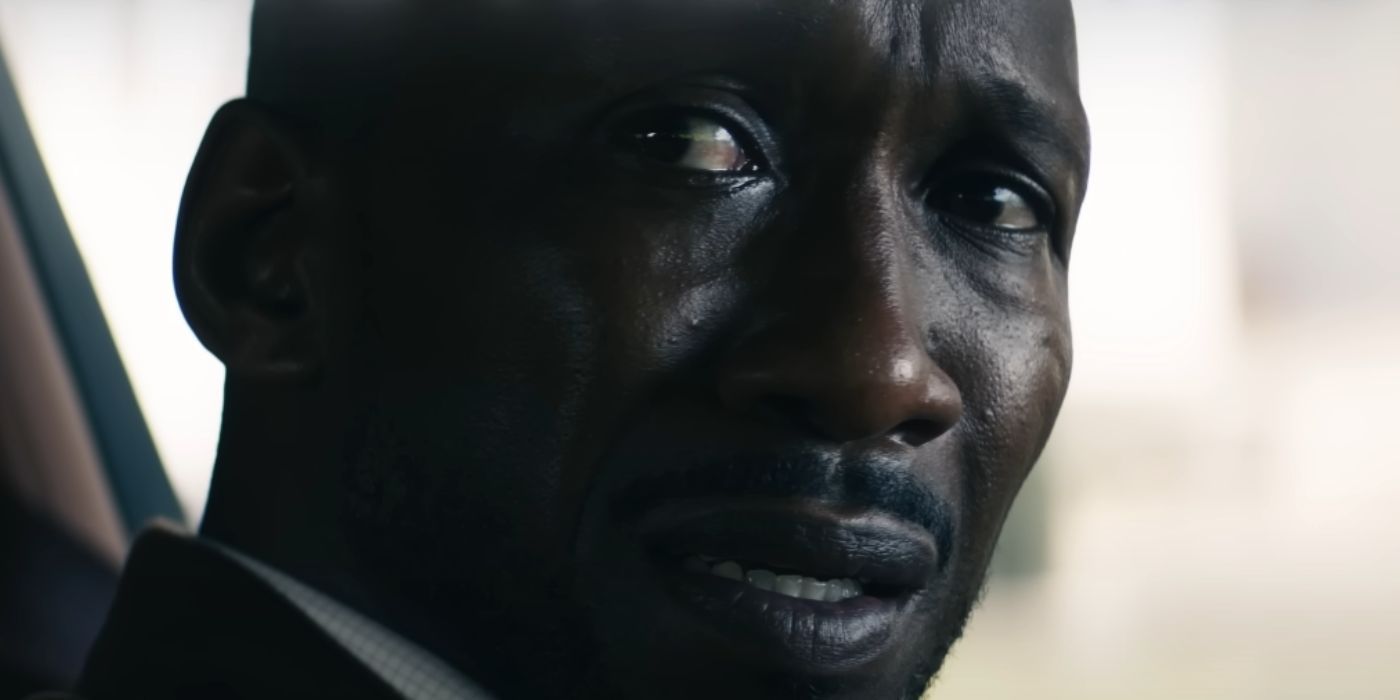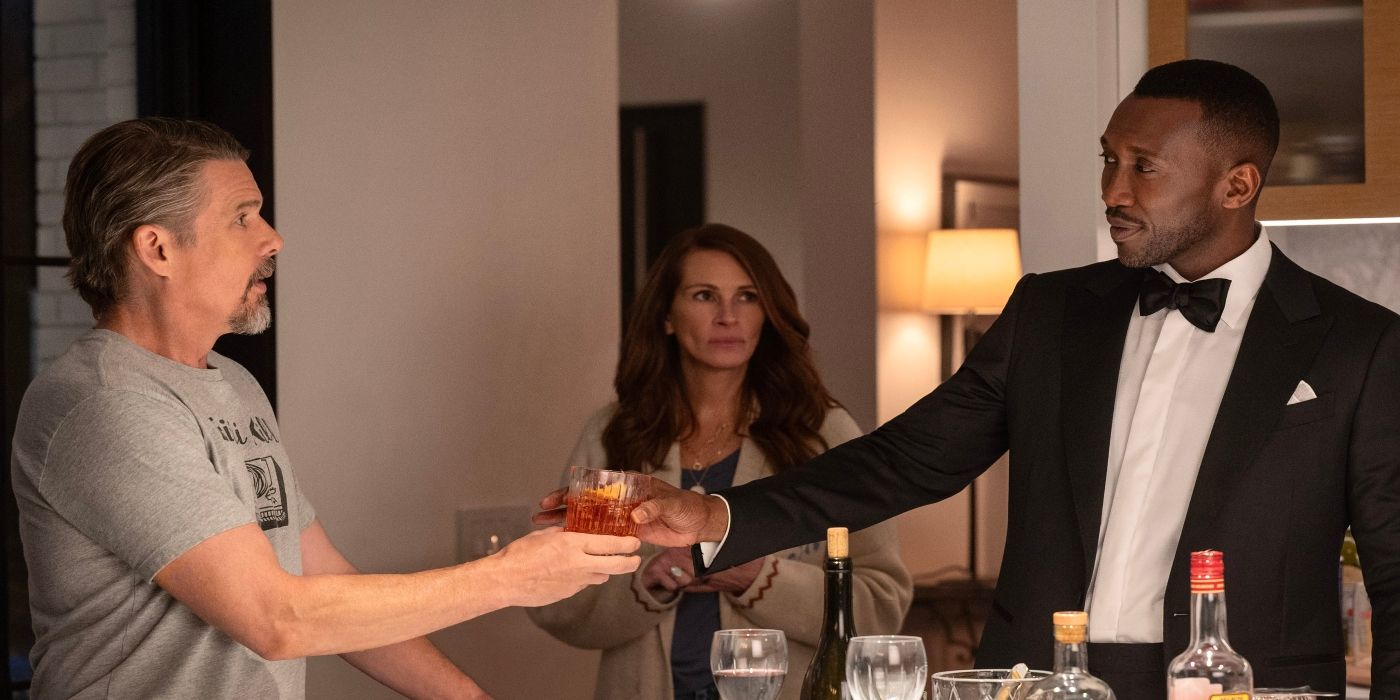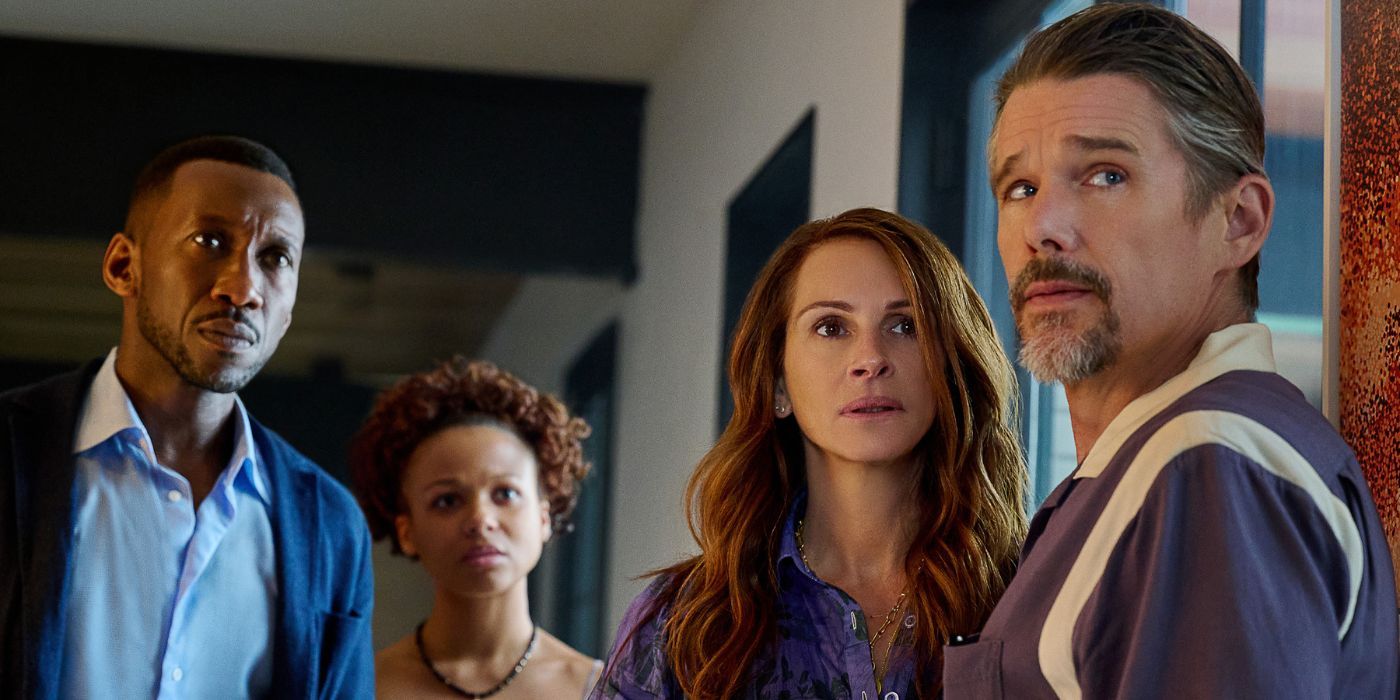Editor’s Note: This article contains spoilers for the end of Leave the World Behind.
The Big Picture
- Leave the World Behind is trending on Netflix with a polarizing response and an ambiguous ending.
- Director Sam Esmail discusses the involvement of Barack Obama, who provided notes on character and theme.
- The film includes references to the show Friends and features Teslas, with Netflix being more lenient on using logos.
Trending at the top of the Netflix charts is Sam Esmail's adaptation of Leave the World Behind, the disaster movie that has the internet buzzing. From its excellent marketing, which Esmail praises in his interview with Collider's Steven Weintraub, to its ambiguous ending, to its association with former President Barack Obama, this feature has been sweeping the comments section across social media with polarized results.
With a small ensemble cast starring Julia Roberts, Mahershala Ali, Ethan Hawke, and Myha'la, Leave the World Behind is based on Rumaan Alam's thrilling bestselling book. The less you know about the premise the better, but even fans of the book will be surprised by Esmail's ending. It's that very ending that's stirred up conversation, and the director tells Collider he's thrilled by the divisive response his debut feature is garnering.
If you've seen the movie and were left scratching your head, wanting more, or satisfied and terrified in equal parts, you don't want to miss out on this spoilery interview. Check out the full transcript below to find out why Leave the World Behind ended the way it did, what was up with the deer, why Teslas, and exactly what input Barack Obama had for Esmail during production. He also talks about the most difficult scene to film, how much of the plot hinged on getting the rights to Friends, that dance scene between Roberts and Ali when they got a little "Too Close," and tons more.
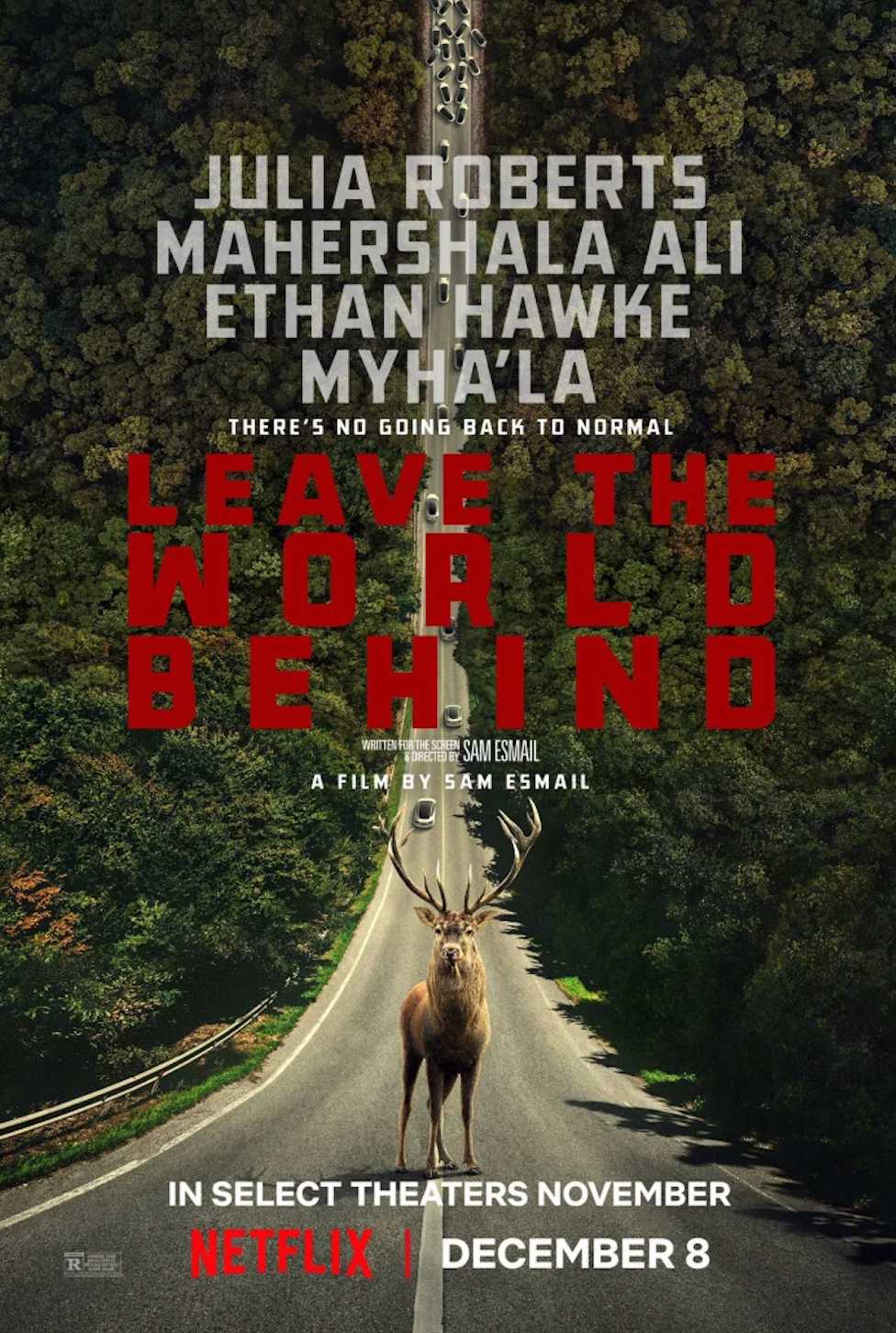
Leave the World Behind
A family's getaway to a luxurious rental home takes an ominous turn when a cyberattack knocks out their devices, and two strangers appear at their door.
- Release Date
- December 8, 2023
- Director
- Sam Esmail
- Cast
- Julia Roberts , Ethan Hawke , Kevin Bacon , Mahershala Ali , Myha'la
- Main Genre
- Drama
COLLIDER: You had incredible success with Mr. Robot and I'm sure everyone wanted to work with you. How much did you debate, “What do I wanna do as my first feature after Mr. Robot?” Was it in your head a little bit like, “I might get one chance at this and I need it to work?”
SAM ESMAIL: No, I don't know if I put that much pressure on myself, though when you put it like that, you're really kind of scaring me. I didn't think about it in terms of, “I wanna do a movie next or I wanna do a series.” For me, it was about what is the right story? What am I gonna get excited about? And honestly, I think I'd written the pilot to Metropolis before I'd even gotten this book, and so the timing just worked out because Metropolis was such a big world-building show that I had to do the movie before the show. So, I wasn't really planning that it must be a movie, that must be this story, I really pick my stories based on what comes across my desk or what inspires me, what comes out of my head, and then I just sort of commit to it from there.
Put Your 'Leave the World Behind' Barack Obama Conspiracies to Rest
Barack and Michelle Obama produced the movie. I'm so curious, what kind of notes did they give?
ESMAIL: Because President Obama is such a movie lover, he really focused his notes on trying to cinematically portray what was in the book in a really interesting way. The book was on his reading list, it’s one of his favorites, and he really wanted to do justice by the book and this theme about mistrust and this being a cautionary tale about what could happen if we don't have that community or bond that holds us together. So he really gave notes with regards to character, empathy, and also the disaster elements. It was really across the board. And again, it was all in pursuit of making it into a good movie. That was his main focus.
I was rewatching the film last night and I have to think that there are people at the Pentagon right now that have watched the movie and are now talking about, “What do we do if this happens?”
ESMAIL: You know, I find myself in this situation a lot. I'm getting flashbacks from Mr. Robot when something would happen in the show and then a few days later I would see it happen in reality. It hasn't even been a week since the film has been out on Netflix and we've seen news headlines about a cyberattack, we've seen the Tesla recall, I saw a video today with a bull running through the subway in New Jersey. It's crazy and wild how sometimes the stuff I work on overlaps with reality, and honestly, Steve, it just scares the fuck out of me. It makes me not wanna make movies or TV shows because I don't want what I do ever to come to pass. [Laughs] So, if the Pentagon is watching this movie and in any way reacting to it, god, I hope they have it under control. That's all I can say.
Listen, I was going to make a joke about “when did you decide you wanted to be the modern Nostradamus?” but let’s hope that it doesn’t happen.
ESMAIL: No, let's just hope I'm absolutely not that, and let's leave it at that.
So I did not realize this, but people at Collider pointed out to me that apparently there are a whole bunch of conspiracy theorists online saying because President Obama was involved in this, this is him secretly signaling the end of the world, and I realized, “Wow, people can dig into anything.” I mean, to me this is crazy talk, but have you heard about any of this stuff?
ESMAIL: Of course I've seen it online, and I think the silly thing about the whole thing is President Obama really came on a couple of months before we started shooting, so the script had basically been written and done. He obviously gave notes on the script, but the bones of the story and the sequences were already written. I would just say they're pretty wrong in terms of his signaling. It had nothing to do with that. And like I said, his notes are really about character and theme and empathy, it really didn't have anything to do with any of these sort of theories that are flying around.
Why Was 'Friends' So Important to the Plot of 'Leave the World Behind'?
What if you couldn't have gotten the rights to Friends?
ESMAIL: That was a big conversation that we had for a long time, and you run through all the sitcoms that are these classics that could potentially work but none of them really had that theme song that was so iconic. And, I have to stress this, the lyrics of that song were so perfect for how the film ends. I honestly don't know what I would have done. There was a point where, after we ran through other options, I think I looked at the team and I said, “I don't think we can afford to lose Friends.” There's no show that fits that moment more perfectly than that show, so we had to use all our powers to make sure that we got the rights, and we luckily did.
I don't know what you would have done because it is such a perfect song and show. Everyone has seen it, it's in everyone's DNA.
ESMAIL: Absolutely. And again, there are other shows that I think people would recognize but it just doesn't have that same sort of, I think, emotional connection that I believe Rose would have to that show. So, from a character perspective, it just felt too perfect.
So, true or not true: you exposed a big problem with Teslas, the film comes out, and now they're recalling everything?
ESMAIL: I mean, I'm not going to take credit for that. I will say I find the timing extremely odd, but I have to think that they discovered this problem separately from the film, or at least I want to believe that.
The other thing that people don't realize is, there's a cost analysis ratio of, like, basically what's cheaper, paying people off for your car having all these problems or recalling all the cars to fix them? It's a real bad thing, and for them to recall all their cars means it was really serious.
ESMAIL: Yes, and specifically, I believe, it was about the autopilot functionality, which is why there's just that eerie coincidence or similarity to the film. But like I said, I choose to believe that it had no association and it was just a complete coincidence.
Here's Why It Had to Be Teslas in 'Leave the World Behind'
Completely. A lot of people online were wondering whether or not you had to get permission and how you were able to include the Teslas. I know you told me at our event that you just did it, so can you sort of talk about why you wanted to use the Tesla and did you have to get permission? How did you pull it off?
ESMAIL: Whenever I do anything, I try to avoid what they call “greeking” labels out. You notice this in a lot of television shows and films where they try to remove logos and labels. I always find that the corporate presence around us is part of our world, and that's something that I personally relate to and I wanted to keep that very much in the film. And Netflix was just really good about it. I've always struggled, sometimes, with other studios because they're a little more sensitive about it, but Netflix is, I wouldn't say they're completely loose about it, but they're a lot looser than the other studios. They’re a lot less precious about me using logos.
So obviously, like with the Friends theme song, in constructing the set piece I wanted to use the most iconic electric vehicle out there, which is the Tesla. We rolled the Teslas in, we filmed it, we cut it, and we showed the cut to Netflix, and like with everything — and this is from Mr. Robot to Homecoming to now — I just keep my fingers crossed that I don't get an angry letter or email from the lawyers saying, “You have to blur this out or cut that out,” or any of that. That didn't happen, and we were able to lock the film as is.
The film comes out and I believe it's been number one on Netflix since it came out, so what's that been like for you to have the number one film on Netflix?
ESMAIL: It's pretty surreal. It's crazy because, obviously, I'm a huge proponent of theatrical but the fact that it's on Netflix, you see and feel that a lot more people have seen the movie than I think would have if it was released in theaters. And then you just hear people talking about it. My wife was out at the store and she just overheard people in line arguing about the ending, and I have a friend in Oakland who was in a Starbucks and heard the baristas talking, also debating about the ending. That's all just very surreal and it's just crazy how much of a broad impact it has in such a short amount of time. I attribute that, obviously, to Netflix, but I have to shout out the marketing team who did such an excellent job, as you know from the drive-in event we did, which was amazing. They were able to really kind of make everyone on the planet know that this movie was coming out on Friday, and they did an incredible job. The reach was amazing. The one thing that I think us, as producers, and Julia and the entire team, what we wanted this movie to do is spark conversation and that's exactly what happened. I'm just grateful for all the people out there that tuned in and watched the film. It's pretty crazy.
'Leave the World Behind' Ending Explained
Speaking of the ending, how did you decide on exactly where you wanted the film to end? It is different from the book, so could you sort of talk about how you got there?
ESMAIL: It was very early on. I read the book the first time as just a fan of the book, and then the second time when I read the book, I started to picture all of the elements that I would change, specifically the cyberattack elements. I started to see Ruth as a younger person, and then I saw that ending with Rose. I think there was just one line in the book where it references Friends, but I sort of took that and extrapolated that into this whole storyline. I just knew that that was the perfect way to end the film, and I pitched it that way to the studios before we even sold it. So, that was the ending from the very early days of me envisioning what this film could look like.
And just to say, obviously the discourse around the ending has been, I'd say, pretty polarizing. A lot of people despise it, and a lot of people also get it. It's been heartening to see think pieces about why that ending does work. I specifically read one by Jen Chaney on Vulture, who I think nailed everything about what motivated me to end the film in that way. The interesting thing about this film is I knew that we couldn't pull punches, meaning I knew that they weren't gonna overcome the disaster. That felt wrong to this story. The whole story was really about these characters and their reconciling their differences within themselves, but maybe at a moment that's too late. I wanted to really commit to that, but at the same time, I wanted a victory that, for me, would feel satisfying. I felt this was the way to get both where I could embrace the ambiguity of, “Where does the world go from here for these characters,” which I think is really potent and true to life, but by the same token, I wanted a victory for, to me, the heart of the film, which was Rose.
I've been reading lots of think pieces and reviews on the film and I ran across one piece that tried to say that I was cynical about Rose and that I was being condescending, or something like that. It couldn't be further from the truth. It was the exact opposite. Rose, to me, was my emotional connection to the film because she's the one that's really, out of all of them, not spinning their wheels. She wants to move forward. That was the whole point about the parable that she shares with her mother the night before, is that she doesn't want to ignore the warning signs anymore, she wants to figure a way out of this, and so I thought it was very sweet to end on her victory.
I also think the ending is quite literally a mirror because presumably you, the audience, are doing exactly the same thing Rose is doing in that moment: staring into a screen. But as the film ends, the baton is handed off to you now. To continue the dialogue, to ask questions, to debate about what you just saw or what will happen. I think films succeed when they’re not used as information delivery devices, but rather opening a channel into your imagination. To that point, I was encouraged to see the many interpretations of the film. To see audience members interested in the visual/sonic language of the movie, everything from color to composition to sound design — this is every filmmaker’s dream. To inspire an audience to process the work on a subtextual level. There’s a Fellini quote that feels apt here — “I don’t like the idea of “understanding” a film. I don’t believe that rational understanding is an essential element in the reception of any work of art. Either a film has something to say to you or it hasn’t. If you are moved by it, you don’t need it explained to you. If not, no explanation can make you moved by it.”
I love the ending. I think there's a lot of people who like resolution, or need resolution, to a story like this when, in fact, you're never gonna get resolution to a story like this because it's life. It keeps going.
ESMAIL: Exactly. And it’s funny, the questions that people wanted answers to are who is behind this, what's going on in New York, and what's gonna happen to them? If you think about the answers to all those questions, I don't think that would actually make the film more satisfying even to those people that are wanting those answers because, ultimately, the story really never was about who was behind this or why they were doing it. It's about these people and how they parallel the collapse of society around them, and that's what we wanted to commit to, and I think that's how the film ends.
I've mentioned this to you before, but I love talking about editing because it's everything. What was the last thing that you cut out of the film before you picture locked and why?
ESMAIL: Wow, that's a great, great, great question. Well, actually, can I flip that on you? Because you know what, what I did do at the last moment, it wasn't cutting something, I was adding something back in. So the film, you know, is not short, it has a healthy runtime, and there was a section in the scene between Amanda and G.H. that second night where G.H. talks about unconscious biases and how there are people out there that are incapable of learning, even at their own expense. That whole section had been cut and not in the film for a long time because, just in general, that night at the house isn’t a lot of action and it is a lot of introspection and dialogue. Specifically with G.H. and Amanda, that scene is incredibly long because they go through a lot of different waves of conversation. So, that had been lifted from the film because I wanted to really keep the pace tight, specifically in that section, but something was really gnawing at me the whole time we were mixing it.
I had mixed the film, we had locked color, and this was a really last-minute decision where I just asked my editor to pull up that scene one more time from an old cut. I watched that moment, and I just thought, “This is too important to the theme of the film to leave it on the cutting room floor,” so we put it back in. Obviously, I've heard the reaction of the film, “It feels a little long and feels slow,” but ultimately, I think, you have to do right by the story, and sometimes pace can get in the way of that. But still, story is king, story is the priority, and I just thought that moment went a long way in nailing what the story was really about.
It's so interesting because for me this movie flies by. Everything is important. There's no scene that I'd be like, “Oh, this should go.” But then there's always gonna be people that prefer a 90-minute movie, and there's no win. As a director, I can't imagine what you're going through when executives at Netflix are telling you, “If we get an hour and 45 minutes, it's gonna appeal to this many people, and if we do two-and-a-half hours it's gonna be this many people.”
ESMAIL: Honestly, that's the tricky part about a film like this because, especially even just for the marketing team. Like I said earlier, they did such an excellent job, but the film is this sort of disaster thriller and the expectation is that it's going to be this thrill ride that's tight and has a very wrapped-up ending. So when we make a film that's a little looser, that's a little bit more involved with the characters and not as much with the set pieces, and that the ending is so ambiguous, when you end up subverting all these expectations, I think that that is what can throw the audience off, but what we have to do as filmmakers is try and go against the grain and say, “This is the movie that we set out to make.” We have to somehow just try and get the audience on board with us on this. I think the fault that we could do is split the difference and try and give the audience what they think they want and then try and keep half of what we are trying to sneak into. You can't really be in between, you have to just 100% commit to what you set out to do. That's what went into that last-minute decision of putting that section back in was really just saying, “Let's not undermine what we've done so far here.”
The people that want the 90-minute disaster thriller, this is a very different film than that, and they will never be pleased with the movie that we set out to do. If I went out there and just lopped off an hour out of this movie and got it down to 90 minutes, and took out all the talking parts and just kept it to the set pieces, I think that would be a terrible version of the movie. I really do. So because that wasn't our intention, that wasn't what we were set up to do, I needed to commit to the film that was in all of our heads. For me, I think it was just our job to get the audience on board with that type of movie.
Completely. Also, if you don't care about the characters, it doesn't matter what's happening on screen.
ESMAIL: Absolutely.
I'm curious, how long was your assembly cut? When you saw it, did you want to jump out the window or did you feel like, “Oh, we have it?”
ESMAIL: So, I did something very different this time. I'm always suicidal after I see an assembly cut. I think after every episode of Mr. Robot and after every episode of Homecoming, I wanted to walk away and tell the network that, “Hey, this didn't work. Let's just scrap this whole thing. I don't have it.” [Laughs] But I did something different this time, and it actually was from an interview, I think I got it from an interview with Tarantino on some podcast he did where he was talking about his editing style, which is — and I could be wrong about this, but this is at least my memory of it — where I would go in and instead of watching the assembly, I would just start working. So I came into the editing bay on the first day with Lisa [Lassek], I had not seen the assembly cut, and I said, “Okay, let's just start the movie.” She started from the opening, we played the first scene, and I said, “Okay, let's stop and let's just start working the first scene.”
So essentially, I just started doing my first pass, and that way it just maintained my anxiety. I was able to maintain my anxiety. I had, like, mini suicides after every scene, but I didn't wanna just completely jump out the window after just watching the whole cut. Let me just stress here that I worked with very talented editors across the board throughout my entire career, so it is not because of them that I want to commit suicide. It's purely because of all the choices that I made on set that completely don't work that now I have to somehow fix. So it's more reflective of me than their work because they're all brilliant and they obviously do great work. This is just all me looking at myself and looking at the choices I made on the day and thinking, “What the hell did I do?” And so I found this to be a more palatable, bite-sized way of going through the process without having to completely torture myself.
Listen, I've spoken to a lot of directors and you are part of the chorus. You are not standing alone.
ESMAIL: [Laughs] Yeah, it's a tough one. And again, I have to stress, it is never about the editors because they do such great, phenomenal work. They're working in a vacuum with dailies, we're not there to kind of guide them and show them our intentions or anything like that, so it's really just about us all the choices we made through set now coming back to haunt us.
What's Up With the Deer in 'Leave the World Behind'?
Have you been reading what people are saying online about the deer in the movie?
ESMAIL: I ran across some of those comments, for sure.
What do you want to tell people about the deer in the movie and what they mean, or do you want to leave it ambiguous?
ESMAIL: This is what I would say, in general, about the film: a film works as a feeling, as a tone. It's not meant for it to be like an essay where every plot point is annotated with logic and references. It's meant to be kind of a hallucination that you subscribe to, and the deer are just kind of an extension of that. It's meant to add a tone. They're representing the ominous warning from nature to us that something's off and we're not listening. That's really all I wanna say about it, and honestly all I wanna say about a lot of the ambiguities in the film. I think I said this to you the night we did the screening, I wanted this film to feel like a dream that slowly turns into a nightmare. I was committed to that. That's the experience that I was committed to giving the audience, and nothing for me ever got in the way of that. So whenever people are trying to piece together the film in a purely detached, logical way, I think that doesn't work, and honestly, I don't think it works with most films. I think a film has to be felt and experienced, and not necessarily thought through in that way.
I totally understand. What is one answer that you wanted the audiences to have by the end, but then also what's something you deliberately chose not to reveal in wanting people to talk after the movie was over?
ESMAIL: Well, I can answer that very easily because I've seen this a lot online. What I didn't want was a cutaway to the city to show what's going on there. I definitely didn't want a general landing in the fields of Long Island and giving us some expository explanation about who's behind this or what's going on. That felt like an entirely different version of the film. That would have betrayed everything that came before it. It would have also kind of snapped you out of this nightmare that I wanted you to be in with the characters. Anything like that would have just been cold water that would have taken you out of this experience that the characters, and by virtue of the characters, the audience, are going through. So, I know a lot of people craved for some context, they wanted to kind of get out of the bubble that they were trapped in with these characters, but that was a deliberate choice that we made to keep you in that bubble because as horrifying and frightening as it is to not know what's going on around you, not know what's going on in the city, that was the sensation that these people felt and that's what I wanted the audience to align themselves with. I just felt like anything else would be a betrayal.
Also, I don't understand why everyone needs everything explained to them to the lowest thing. Life is not going to get explained to you. You only get the information. We’re on the same page. So, the dance scene with Mahershala and Julia where they're dancing and then they embrace, it’s a great scene with the way you move the camera. How much direction did you give them in that scene? Can you sort of talk about filming that sequence?
ESMAIL: Well, let me just say that Julia and Mahershala are great dancers. For that scene, I didn't want them to be good dancers. I wanted them to be the dorkiest dancers possible because I felt like that was true to their characters, G.H. and Amanda. It was really hard to get them to dance poorly [laughs], and so we worked with a choreographer to kind of nail down some of the moves. It was actually a oner; it was a single shot where we're just pushing in on them as they were doing this whole number. Honestly, after a few takes, I think we did it about 17 or 18 times and I think this was maybe take 17, it was just about letting them get loose and letting them do their thing. The only direction I had is when they got too cool I would have to come in and say, “Let's dork it up a bit. Let's not be too good at dancing.” That was the only direction I gave. But I do wanna say that because I know I've seen a lot of feedback about how they're not great dancers. Let me just say, that is not on them, that is completely on me, so you can blame me for that because that was the direction I gave. [Laughs]
Julia Roberts Saved This 'Leave the World Behind' Scene
What scene on set ended up being the toughest to film for whatever reason? Maybe it just wasn't right on the page or you were having camera problems, or whatever it may be, what was the one that really was difficult?
ESMAIL: The most difficult part was the scene with Myha’la and Julia screaming at the deer because that scene, for me, even as written and when we started filming it, I wanted that scene to be really scary and really fucking funny. I love when scenes can do that in equal parts – that you're watching these two people sort of unleash whatever fears they have to get these deer to go away, and they're, by virtue of that, just unleashing all of the pressure and fear that they've had the entire movie. They're just letting it all out in these screams. But when you look at it, it's also kind of funny that they're screaming in this kind of maniacal way.
So, that’s a very, very tough thing to pull off, and the problem is we don't actually have deer there. And this is me as a director, it's very hard for me. I'm a very visual person. It's very hard for me to film a scene like that, especially with that sort of emotional commitment from my cast, without actually seeing what they're looking at, without seeing how the scene is gonna look. That was just a really tricky thing for me to decide how to film it and what the shots are gonna look like. But I will say that that was the scene that scared me the most to shoot and when we got there I was still kind of like, “Am I gonna be able to do this?” And to make matters worse, my incredibly talented VFX supervisor, Chris Harvey, was putting little stuffed animals out there in the woods, and it just frustrated me. I mean, obviously he had to do that to make sure we captured the right lighting on the fur and really make sure that we nailed down the VFX later on, but it just really took me out of it as a director on the day because I'm very used to seeing things done practically. So I would say, for me, that was the toughest. The thing that got me through it was Myha’la and Julia. They were just incredible and committed to their performances, and they, out of anything on that day, made me believe there were hundreds of deer surrounding them.
It helps when you're working with two of the better actors on the planet.
ESMAIL: Yeah, that goes a long way. [Laughs]
The film opens with a shot of the earth. How much did you debate what that opening shot would be? Was it ever going to be something else, because the opening shot sets up everything?
ESMAIL: So to me, the opening shot was one of those things that I pictured when I read that book the second time and started to see the film. In all of those shots throughout the film, I just wanted to contextualize for the audience what this is all about, which is this blue ball in the middle of space. That's it. That's our world, and that's all we've got. It kind of connects to Ruth's line later on in the shed when she speaks to Amanda and she says, “As much as we may not like people, it's all we've got.” I think for me, I wanted to really establish that sort of perspective very early on in the film, just the sun rising, revealing our planet, linking to a man waking up in his bed. Something that massive and with such scope is connected to something very intimate and small and ordinary, and something we do every day in our lives. I wanted to really always keep that perspective and sort of underline it throughout the film because ultimately that's what the movie is about: this is our world, what do we wanna choose to do with it?
Leave the World Behind is available to stream on Netflix.

